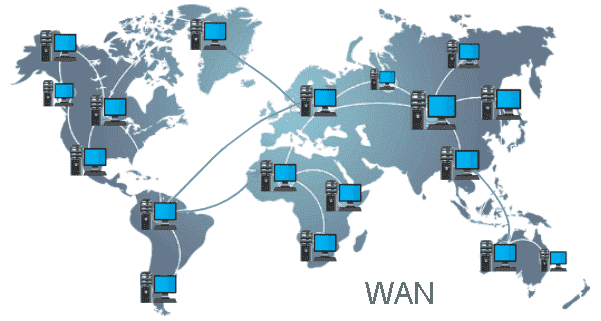There are different types of computer networks available that we’ll discuss in this article, But before knowing about its types we need to get some information about Network.
What is Network ?
If a process in one device is able to exchange information with a process in another device, then we can say these two devices are making a ‘Network’. It consists of a group of computer systems, servers, networking devices are linked together to share resources.
Types of Networks –
There are 11 types of networks in use now a days that we’ll discuss briefly :
Personal Area Network (PAN)
The smallest and most basic network type, a PAN is made up of a wireless modem, a computer or two, phones, printers, tablets, etc.

Local Area Network (LAN)
LANs are the most widely known network type, It connect groups of computers and low-voltage devices together across short distances to share information and resources.
Wireless Local Area Network (WLAN)

WLANs make use of wireless network technology, such as Wi-Fi. These types of networks don’t require that devices on physical cables to connect to the network.
Metropolitan Area Network (MAN)
These types of networks are larger than LANs but smaller than WANs and combination of the elements of both the types of networks MANs cover an entire geographic area.
Campus Area Network (CAN)
This type of networks are larger than LANs, but smaller than metropolitan area networks (MANs),
Wide Area Network (WAN)
It is slightly more complex than a LAN, a WAN connects computers together across longer physical distances. This allows computers and low voltage devices to be remotely connected to each other.

Storage Area Network (SAN)
As a high speed network that connects shared pools of storage devices to multiple servers, They move storage resources away from the network and place them into their own high performance network.
System Area Network (also known as SAN)
It is used to explain a relatively local network that is designed to provide high speed connection in server-to-server related applications, storage area networks (also called as ‘SANs’) and processor-to-processor related applications.
Passive Optical Local Area Network (POLAN)
POLAN is served as an alternative to traditional switch based Ethernet LANs, ‘POLAN Technology‘ can be integrated into structured cabling to resolve concerns.
Virtual Private Network (VPN)
By extending a private network across the Internet, a VPN lets its users to send and receive data as if their devices were connected to the private network.

Enterprise Private Network (EPN)
These types of networks are built and owned by businesses that want to securely connect its various locations to share computer resources.
